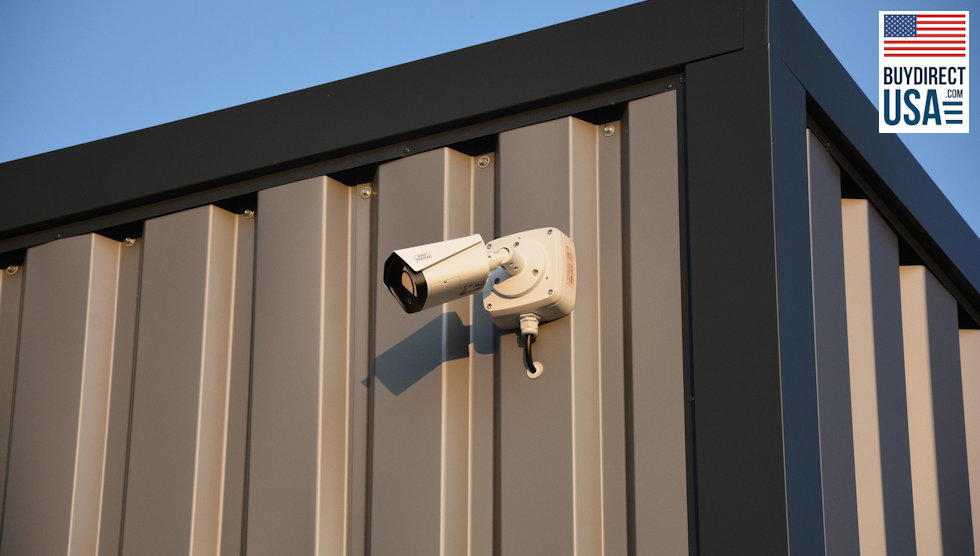Deloitte 2022 Manufacturing Industry Outlook
Robert Beagle
Though it is unusual to see economic growth indicators in times with historic labor shortages and supply chain disruptions, this is exactly the trajectory of the US manufacturing industry on the heels of the pandemic. Industrial production and capacity utilization surpassed pre-pandemic levels in 2021 as increases in new orders signal growth continuing in 2022. Projections made by Deloitte based on the Oxford Economic Model (OEM) anticipate a 4.1% GDP growth in manufacturing for 2022. Furthermore, as capital expenditures rise, a combination of high business valuations, strong earnings, and low-cost debt may also encourage companies to continue to add technology capabilities, gain share, and expand in new markets with mergers and acquisitions. These policy initiatives and infrastructure investments may have the potential to aid in the manufacturing industry’s continued recovery.
However, this optimism surrounding revenue growth is kept in check by caution from ongoing risks like workforce shortages, supply chain instability, and a reduction in operational efficiency and margins as a result. Because of this, job openings hover near the all-time high of more than 800,000 – more than twice pre-pandemic levels. On top of that, sourcing bottlenecks and irresolvable global logistics are likely to remain challenges in 2022 along with cost pressure and inflation risk. Materials like steel, aluminum, and other commodity prices have also surged amid shortages. The manufacturing industry can expect continued uncertainty from a range of potential global disruptors like COVID-19 variants, cyberattacks, environmental challenges, and higher corporate taxes.
As business agility can be crucial for companies looking to operate through economic turbulence, manufacturers with higher digital maturity before the pandemic had advantages to some extent through greater resilience, as did those companies who picked up digital practices amid the crisis. Now, from spanning smart factory initiatives to enterprise transformation and e-commerce – digitalization can be vital for a more sustainable and competitive future in manufacturing. In fact, 86% of manufacturing executives surveyed by Deloitte reported that they have a positive outlook on the manufacturing business, up from 63% in 2020.
As manufacturing business leaders look to defend against future disruptions and strengthen the offensive, here are five important trends to consider for manufacturing companies in the year ahead.
Workforce Shortages
Although the manufacturing industry has had historic raises in baseline wages for production workers, some competing industries are raising wages faster than manufacturing companies. This resulted in a record number of unfilled jobs which is likely to limit higher productivity and growth in 2022 – a shortfall of 2.1 million skilled jobs is estimated by the year 2030.
However, as digitalization transforms the manufacturing industry, automation of these recurring tasks could alleviate some of the stress brought on by the labor shortage. This has forced companies into adopting more flexible and innovative workplace strategies, incentivizing them to rethink the composition, capabilities, and future-of-work strategies of the workforce.
In order to attract and retain new talent, manufacturers should pair reskilling strategies with a recasting of their employment brand – changing the public’s perception by making manufacturing jobs more desirable could be key to meeting hiring needs in 2022. Of those surveyed, 38% of executives reported that attracting new talent to their workforce is a top priority in 2022 – specifically for the production sector. This is hampered by the reputational harm to the industry caused by moving jobs to lower-cost regions and outsourcing jobs in the past. In order to alleviate these concerns, the industry may need to come up with some creative solutions in order to change public perception – like placing a spotlight on modern facilities, advancing technologies, career mobility, and enhanced employee satisfaction.
Attracting new talent goes hand in hand with engaging with a wider talent ecosystem to reach a more diverse, skilled talent pool – which could be essential to offset the recent wave of resignations, retirements, and otherwise voluntary exits due to concerns we discussed like work-life balance. Leading manufacturing companies are revisiting hiring requirements, coming up with more ways to make in-person and online applications easier, and expanding their outreach.
All in all, manufacturing execs need to balance goals for employee retention, culture, and innovation. A perfect example is when remote work for office workers saw early success for business continuity early in the pandemic. This caused many employees and employers to rethink the way we work and live. As hybrid and flexible work models continue to evolve, manufacturers should explore ways to add flexibility to their organization in order to attract new workers and retain the ones who haven’t left yet. Then and only then can organizations keep up with the rapid pace of change in today’s economic landscape and come out ahead.
Supply Chain Instability
As transportation challenges are likely to continue in 2022, supply chain challenges are still unfolding. Manufacturers face near-continuous disruptions from the global supply chain that force them to add costs – and test their ability to adapt to new challenges. Purchasing managers report continued systemwide complications brought on by high demand, rising costs of raw materials and freight, and slow deliveries in the United States. As driver shortages in trucking and congestion at US container ports continue, demand is likely to outpace supply which means higher costs are going to continue to be passed on to the customer.
The root causes for this extended supply chain instability include overreliance on low inventories, lack of diversification of suppliers, and hollowing out of domestic capability. As 41% of executives report they will further add or diversify their suppliers in existing markets, supply chain strategies in 2022 should be multipronged in the manufacturing industry to diminish instability.
To combat this instability, 53 percent of organizations surveyed said they plan to enhance data integration in order to have better supply-and-demand visibility and planning. Without this advancement in data integration, an estimated 3 out of 5 manufacturers could see smart factory initiatives stalled by 2025. As global sourcing and low-inventory models continue to diverge, reshoring of components and final assemblies is likely to pick up steam. On top of that, as rising wages and transportation costs rise globally, onshoring and nearshoring (or transferring business operations to nearby countries or ports) are becoming more competitive as manufacturers look to avoid a repeat of the 2020-21 instability. In fact, of those surveyed by Deloitte, 24 percent of manufacturers said they are considering moving operations closer to their end consumers in 2022. Furthermore, some manufacturers have already localized their supplier networks in response to rising tariffs – and the US-Mexico-Canada Agreement is likely to continue driving nearshoring from China to Mexico.
Policymakers are supporting this initiative to strengthen resilience in supply chains as a 100-day supply chain review in 2021 recommended investments to strengthen supply networks for semiconductors, large-capacity batteries, critical minerals, and pharmaceuticals. These initiatives are expected to translate into the evaluation of supply chains for defense, public health, biological preparedness, information and communications technology, energy, transportation, agriculture, and food production in 2022.
Smart Factory Initiatives
As acceleration in digital technology adoption could bring operational efficiencies to scale, manufacturers should look to embrace digital capabilities from corporate functions to the factory floor. More organizations are taking these steps to drive competitiveness by enhancing their smart factories in order to be more connected, reliable, efficient, and productive in 2022. In fact, 45 percent of manufacturing executives surveyed said they expect to continue increasing investments that support operational efficiency from investments in the industrial internet of things (IoT) that connect their machines and automate processes.
Cybersecurity Practices
As high-profile cyber attacks have been prevalent in industries and governments in the past year, manufacturers have elevated cybersecurity to a more essential part of risk management for most executives and boards – especially those in essential industries. In fact, most US manufacturers reported phishing or ransomware security incidents in the past 12 months. What’s more is that 82 percent of these manufacturing executives plan to invest more in cybersecurity in 2022, with nearly a quarter of them allocating an additional 10 percent from their annual budget.
The fact of the matter is, manufacturing systems and technology of the past – that are still used in many modern facilities – were not built for today’s sophisticated network challenges. And remote work vulnerabilities have only left manufacturers more susceptible to these breaches.
With an unstable workforce, insider threats are also rising – hand in hand with the rising workforce displacements. This convinces many manufacturers to put zero-trust security measures in place – requiring authentication and limiting access to anyone who doesn’t need it at the time. This type of vigilance requires retooling, employee training, and oversight within and across departments. There is no question that cybersecurity is a firmwide responsibility in 2022.
With rising threats, manufacturers need to not only look at their cyber defenses but also the resiliency of their business in the event of a security breach. In fact, 56 percent of those surveyed anticipate investing more in detection. In truth, cybercriminals can cause harm beyond intellectual property and financial losses – especially now that malware could now be tied to your organization’s AI and cryptocurrencies. These hackers can shut down operations, disrupt entire supplier networks, and compromise safety and productivity in the event of a breach. The potential for this additional oversight is likely to promote more industries to rethink cybersecurity and crisis response in the coming years.
ESG Investments
As environmental, social, and governance factors are redefining and elevating sustainability in manufacturing like never before, one-third of total assets under management in the financial asset advisory industry is predicted to be ESG-dedicated assets by 2025. Since the cost of capital can be tied to rating on ESG investments, this becomes a priority for the financial health and competitiveness of an organization. We predict that as investors, boards, customers, employees, and policymakers continue to focus on these ESG factors, more attention on industry actions and reporting is expected in 2022.
Going hand in hand with reporting on performance, manufacturers are likely to continue to increase engagement with a wider set of stakeholders through operational disclosures. For example, emphasizing the social factor, or the organization’s role in community engagement, worker health and safety, and equity has recently gained traction. In fact, two-thirds of surveyed organizations said they plan to invest in social aspects as a part of sustainability practices in 2022. And to attract new talent and appeal to workforce expectations, these organizations are making efforts to make ESG factors more visible.
Manufacturers are now making environmental accountability a larger focus, becoming more focused on their net-zero or carbon-neutral goals, redesigning sustainability roles, and quantifying efforts and results around energy consumption – which goes hand-in-hand with being more transparent to the public about ESG practices. As the fast-evolving ESG landscape may require close monitoring in 2022 for manufacturers, proactive approaches to ESG factors can help manufacturers stay ahead of the change and even create a competitive advantage in their field.
Turning Risk into Opportunity
As industry and market trends are likely to accelerate organizational changes in 2022, manufacturers are adapting strategies for the future of work, supply chain resilience, and digital maturity. As we push further into the digital age, these moves towards a smarter manufacturing landscape may further shape the competitive landscape as a positive outlook for the next year pushes companies to think big. However, manufacturers are reminded to execute these new practices with agility, which oftentimes involves starting small and scaling upward to create value.
To help maintain margins and capture growth, these manufacturers should consider navigating elevated risks in the near term while advancing sustainability priorities in the long term. If these past few years have taught us anything, it’s to expect the unexpected, but manufacturers, in particular, have acquired a greater resiliency to sustain momentum and competitiveness.
About Deloitte
Deloitte provides industry-leading audit, consulting, tax and advisory services to many of the world’s most admired brands, including nearly 90% of the Fortune 500® and more than 7,000 private companies. Our people work across the industry sectors that drive and shape today’s marketplace — delivering measurable and lasting results that help reinforce public trust in our capital markets, inspire clients to see challenges as opportunities to transform and thrive, and help lead the way toward a stronger economy and a healthy society. Deloitte is proud to be part of the largest global professional services network serving our clients in the markets that are most important to them. Now celebrating 175 years of service, our network of member firms spans more than 150 countries and territories. Learn how Deloitte’s more than 312,000 people worldwide make an impact that matters at www.deloitte.com.
About the Contributor
Robert Beagle is a regular blogging contributor to Camera Security Now, a nationwide installer of security camera systems for manufacturers.







